Explainer: What makes Iran's Hadid-110 kamikaze drone and sub-launched loitering munition unique?
By Ivan Kesic
Iran's armed forces on Wednesday unveiled the cutting-edge Hadid-110 kamikaze drone and a submarine-launched loitering munition, showcasing a significant expansion in the drone fleet tailored for special naval operations.
These advanced systems were put on display during Leader of the Islamic Revolution Ayatollah Seyyed Ali Khamenei's visit to the impressive "Eqtedar 1403" (Power 2025) exhibition, where he observed the latest breakthroughs and capabilities of Iran’s fast-evolving defense industry.
The military exhibition served as a big stage for next-generation weaponry, featuring state-of-the-art air defense systems, aerospace innovations, aviation advancements, ballistic and cruise missiles, drone technologies, smart munitions, and modern naval vessels.
A team of military and technological experts from Iran's defense sector provided in-depth insights into the weaponry on display, offering visitors a closer look at the nation's growing military prowess.
Among the highlights of the event were live demonstrations of two highly anticipated new weapons: the Hadid-110 kamikaze drone and a torpedo tube-launched loitering munition, a testament to Iran’s growing expertise in unmanned warfare.
What are the specifications of Hadid-110?
The Hadid-110 represents a formidable addition to Iran’s drone arsenal. Unlike conventional propeller-driven kamikaze drones, this advanced UAV is powered by a jet engine, enabling higher speeds and greater agility.
It is launched from a tripod using a rocket booster, ensuring rapid deployment.
Hadid-100 design boasts a cropped delta wing configuration coupled with a tapered swept vertical stabilizer, engineered with sharp edges to minimize its radar cross-section and enhance stealth capabilities.
While the Ministry of Defense hasn’t disclosed its specific technical details, the drone’s size suggests it falls into the tactical kamikaze category, with an estimated range spanning several tens of kilometers and a warhead weighing a few kilograms, ideal for precision strikes against high-value targets.
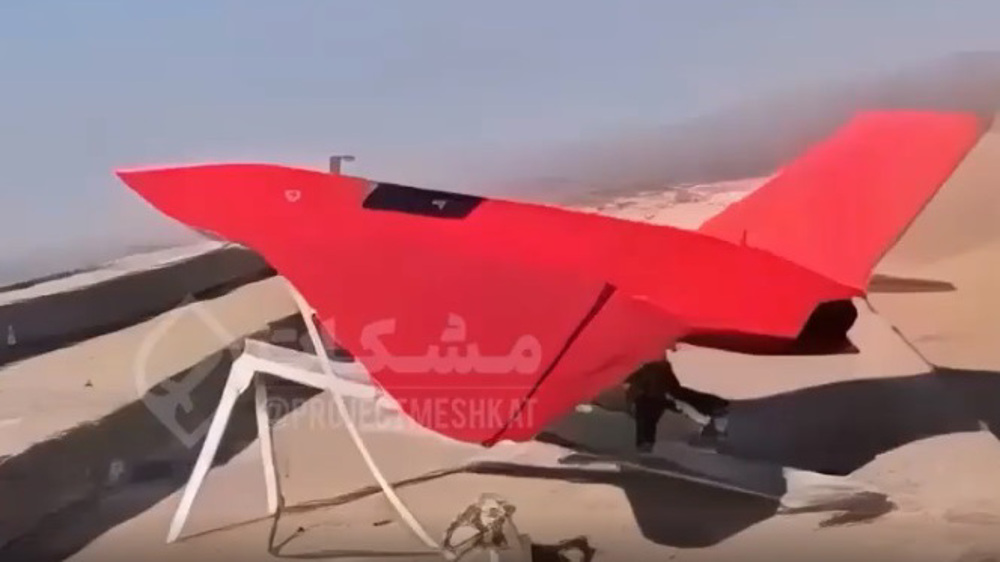
Since the Hadid-110 has only been shown from above in photos and footage, key details about its onboard cameras, sensors, or whether it features an intake beneath the fuselage remain unknown.
However, a brief video clip provides valuable insights into its deployment process. The footage showcases Hadid-110 drones stored in flat wooden boxes, accompanied by a foldable metal tripod ramp and a handheld portable controller with a display.
It then captures a dramatic launch sequence, culminating in the drone striking a marked target with pinpoint accuracy.
With an estimated length and wingspan of around one meter, the Hadid-110 is approximately 35-40 percent the size of Iran’s mass-produced kamikaze drones, including the Shahed-131, Shahed-136, and Shahed-238, suggesting a total mass of several dozen kilograms.
Iran has already ventured into jet-powered drones, fielding models such as the Karrar and Shahed Saegheh combat drones, the Shahed-171 reconnaissance drone, the Shahed-238 kamikaze drone, and even scaled prototypes of the ambitious Qaher-313 stealth fighter.
However, the Hadid-110 stands out as the world’s smallest jet-powered kamikaze drone, a significant milestone in unmanned aerial warfare.
Its greatest advantage lies in its high-speed flight, reaching several hundred km/h. This, combined with its compact size and stealth-optimized design, makes it exceptionally difficult to intercept using conventional anti-drone systems.
What is the submarine-launched loitering munition?
In addition to the Hadid-110, Iran’s armed forces unveiled an innovative X-wing loitering munition, capable of underwater launch, a groundbreaking feature designed for deployment from submarines or unmanned underwater vehicles (UUVs).
This subsurface launch capability provides a significant tactical edge over traditional surface-launched drones, which expose vessels to enemy reconnaissance and potential attack.
By launching from beneath the waves, submarines can maintain stealth while extending their offensive reach.
The concept of submarine-launched missiles is not new – SLBMs (submarine-launched ballistic missiles) and SLCMs (submarine-launched cruise missiles) have existed for decades.
Some nations have even experimented with submerged anti-aircraft and anti-ship missile launches. However, this marks the first known case of a submarine launching a loitering munition, granting Iran a unique capability in modern warfare.
The system operates using a torpedo tube-launched capsule. Once the capsule surfaces, its nose cover ejects to the side, revealing a launch tube for the loitering munition.
This newly developed X-wing loitering munition, which remains unnamed, bears a striking resemblance to the Rezvan loitering munition, introduced in mid-January.
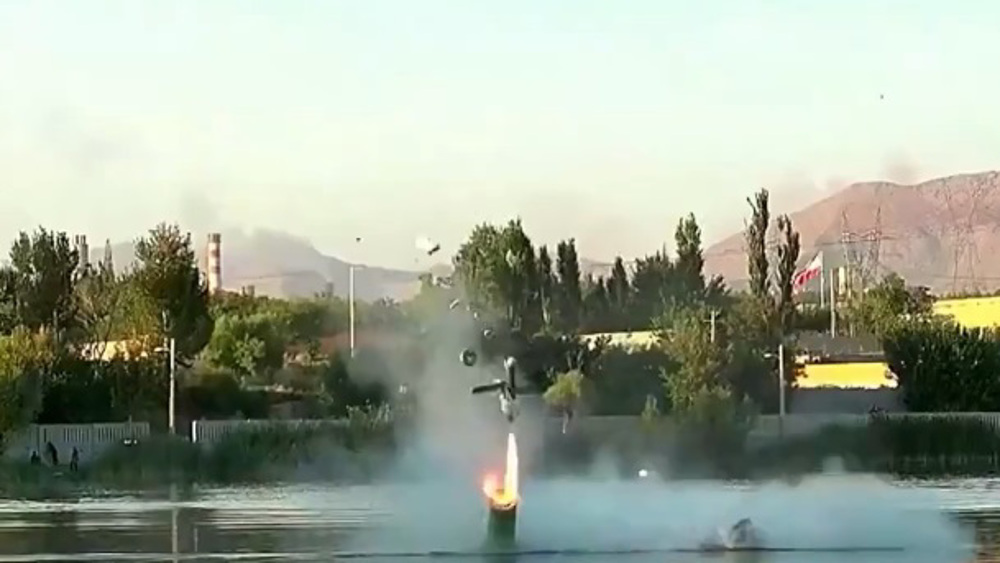
What is the concept of submarine-launched weapons?
The concept of submarine-launched weapons is far from new. Submarine-launched ballistic missiles (SLBMs) and submarine-launched cruise missiles (SLCMs) have been in use for decades, with various countries also experimenting with launching anti-aircraft and anti-ship missiles from underwater platforms.
However, Iran’s latest innovation takes this concept a step further: for the first time, the submerged launch of a loitering munition has been demonstrated, giving Iran a unique and groundbreaking capability on the global stage.
The system functions with a tubular capsule housing the munition, launched from a horizontal torpedo tube. Upon surfacing, the nose cover of the capsule is ejected, and the tube transforms into the launch platform for the loitering munition.
The X-wing loitering munition, though its name remains undisclosed, bears striking similarities to the Rezvan loitering munition, which was revealed in mid-January.
Yet, the distinct shape of its wings confirms that this is not a direct replica. Both loitering munitions feature four folded lifting wings and four folded tail fins, which unfold upon launch, transitioning the munition into flight mode.
A solid-fuel booster propels the munition initially, ensuring a swift launch from beneath the water’s surface.
Details about this new loitering munition remain tightly guarded, with its guidance system still unknown to the public.
However, based on the technological sophistication of Iran’s recent developments, it is highly likely that the munition incorporates artificial intelligence (AI), allowing it to navigate complex targets with precision.
This submerged launch capability represents a quantum leap in both naval warfare and drone technology, as Iran continues to expand its technological and strategic horizons.
Oil prices rise as Trump’s Venezuela blockade stokes supply uncertainty
Iran develops advanced Cryogenic, space-simulator technologies
VIDEO | Israel increasingly relies on ‘agents’ in Gaza to create ‘chaos’
Iran announces new official exchange rate for US dollar
UK police threaten arrests over ‘intifada’ chants at pro-Palestine protests
US-Israeli spy network neutralized during 12 day war: Iran Armed Forces
Iran condemns US maritime blockade on Venezuela as ‘state piracy’
VIDEO | Press TV's news headlines


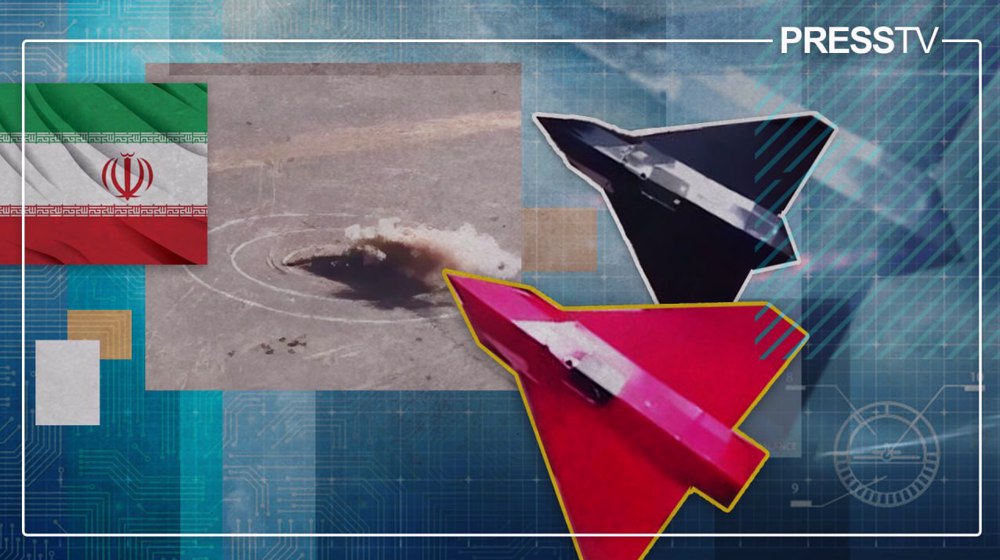






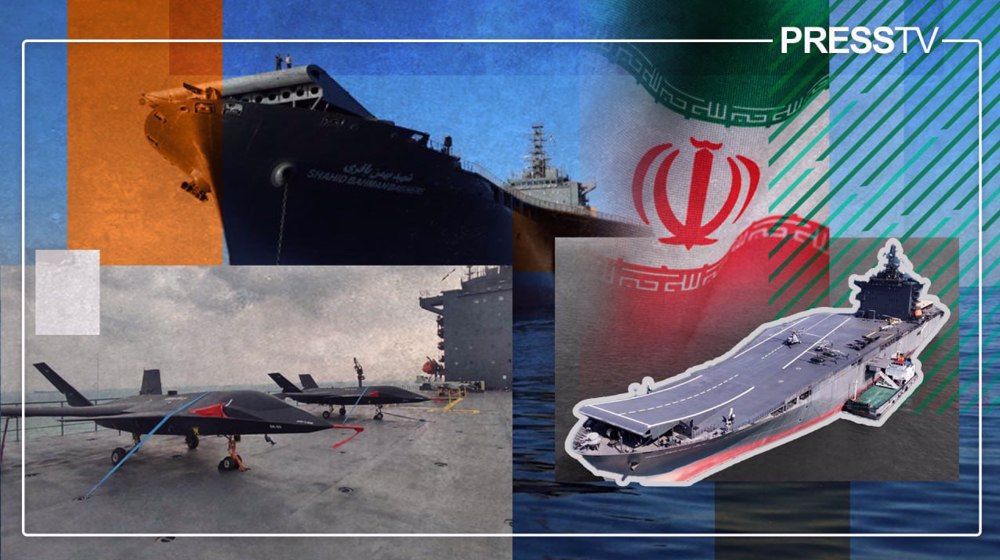
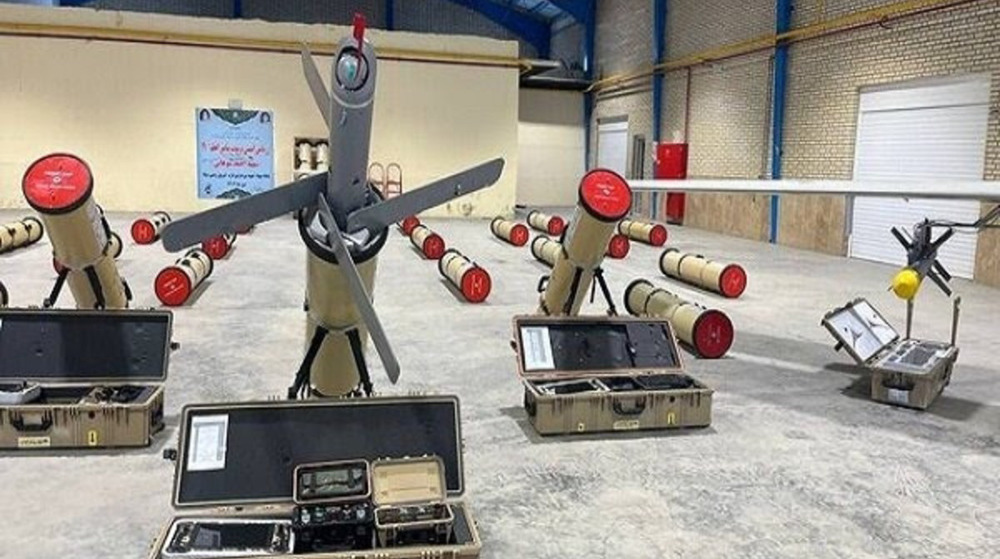
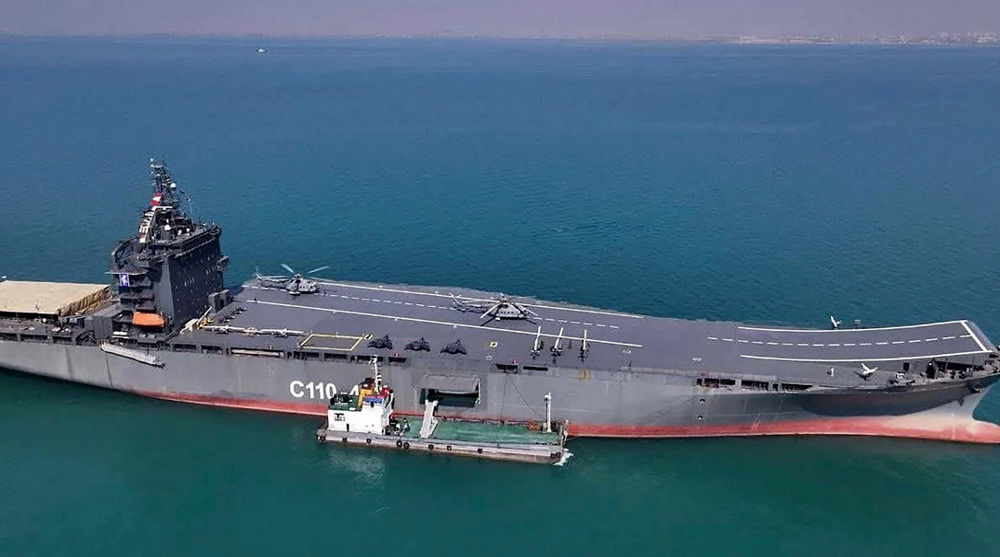
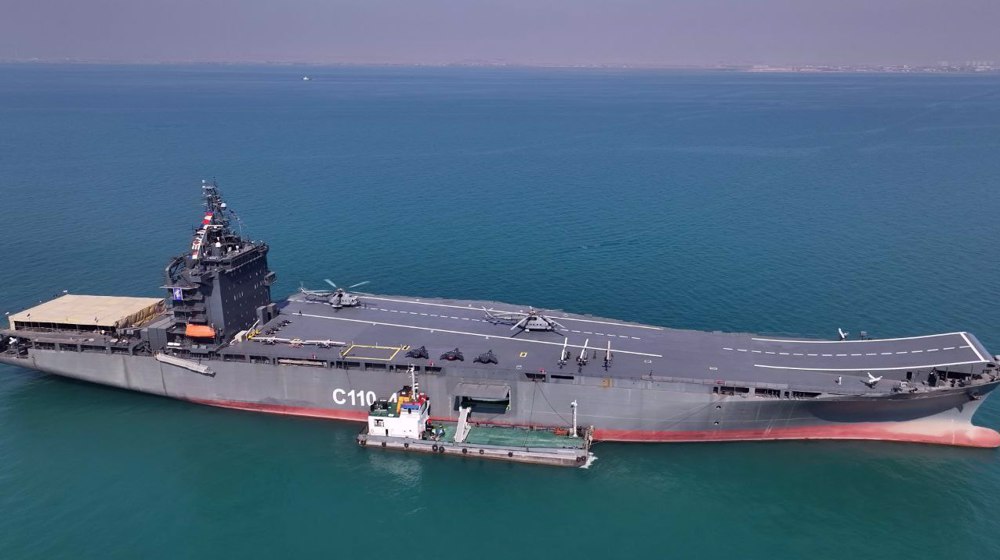
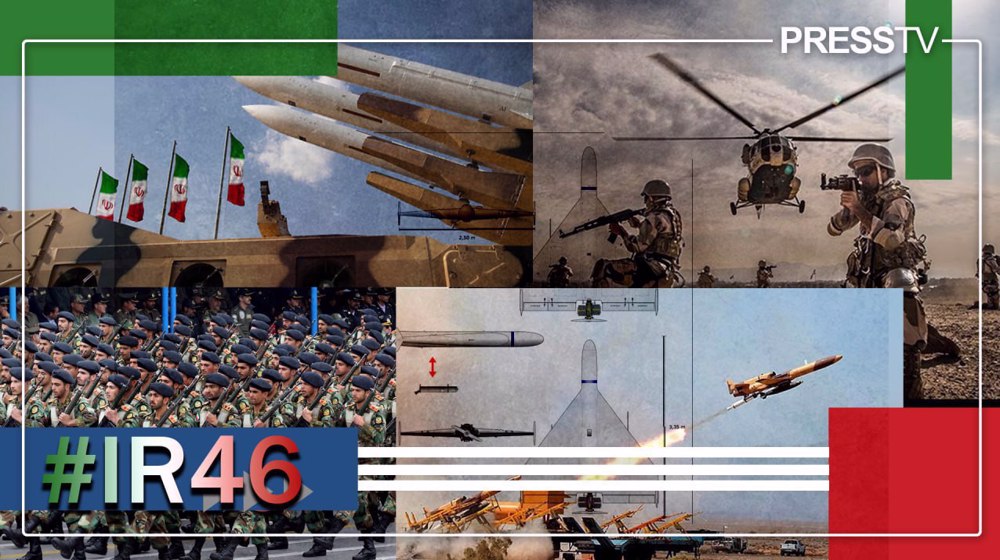

 This makes it easy to access the Press TV website
This makes it easy to access the Press TV website